Kichler 310160SBK Manuel utilisateur
- Catégorie
- Ventilateurs ménagers
- Taper
- Manuel utilisateur
Ce manuel convient également à

60" Eris LED


TABLE OF CONTENTS
SAFETY RULES ………………………………………………………. 4
TOOLS REQUIRED …………………………………………….… 5
PACKAGE CONTENTS ………………………………………… 5
MOUNTING OPTIONS ………………………………………… 6
HANGING THE FAN ……………………………………………... 7
INSTALLATION OF SAFETY SUPPORT ……………… 9
ELECTRIC CONNECTIONS ………………………………… 10
FINISHING THE INSTALLATION ………………………… 11
INSTALLING THE SWITCH HOUSING …………………… 12
INSTALLING WITHOUT LIGHT KIT ………………………… 13
INSTALLING THE LED LIGHT KIT AND GLASS ….… 14
INSTALLING THE WALL CONTROL ………………………… 15
CONTROL SYSTEM SET-UP …………………………………… 16
OPERATING INSTRUCTIONS …………………………………… 16
TROUBLESHOOTING ……………………………………………… 17
FCC WARNING ………………………………………………………….. 18
60" Eris LED
3

4
WARNING:
WARNING:

PACKAGE CONTENTS
Unpack your fan and check the contents . You should have the following items:
A. Mounting Plate
B. Mounting Plate Cover
C. Motor Body
D. Fan Blade (3)
E .Switch Housing
F. Steel Cap
G. LED Light Kit
H. Glass Assembly
I. Wall Control System
Phillips screwdriver
Blade screwdriver
11 mm wrench
Step ladder
Wire cutters
TOOLS REQUIRED
J. Package hardware
1) Mounting hardware :
Wood screw (2) ,Flat Washer (2) , Screw (2) ,
Lock washer (2), Wire Connector (3)
2) Blade attachment hardware :
Screws (14)
3) Safety cable hardware :
Wood screw (1) ,Spring washer (1),
Flat washer (1)
4) Balance kit
5) Light Kit hardware: screw (4)
6) Mounting plate cover hardware:
screw (4); screw with washer (4)
60" Eris LED
5
J
A
B
C
E
G
H
F
I
D

6
MOUNTING OPTIONS
If there isn’t an existing UL (cUL for Canadian Installation) listed
mounting box, then read the following instructions. Disconnect the
Secure the outlet box directly to the building structure. Use
appropriate fasteners and building materials. The outlet box and its
support must be able to fully support the moving weight of the fan
(at least 50 lbs). Do not use plastic outlet boxes.
box.
NOTE: If you are installing the ceiling fan on a sloped (vaulted)
ceiling, you may need a longer downrod to maintain proper
NOTE: Fig.3 is only for fan with downrod hanging system.
clearance between the tip of the blade and the ceiling. A minimum
clearance of 12” is suggested for optimal operation.
NOTE: Depending on the location you have selected for installation,
you may need to purchase and install a “Joist Hanger” for the
support of the outlet box. Make sure the joist hanger you purchase
has been designed for use with ceiling fans. (Fig. 4)
Fig. 1
Outlet Box
Outlet Box
Fig. 2
Provide strong
support
Recessed
Outlet Box
Ceiling
Mounting
Plate
Fig. 3
ANGLED CEILING
MAXIMUM 30° ANGLE
Outlet Box
Fig. 4

HANGING THE FAN
REMEMBER to turn o the power before you begin installation. This is necessary
for your safety and also the proper programming of the control system.To properly
install your ceiling fan, follow the steps below.
Step 1
. Before attaching fan to outlet box (not included), ensure the outlet box is
securely fastened to at least two points to a structural ceiling member (a loose box
will cause the fan to wobble). Pass the 120 volt supply wires from the ceiling outlet
box through the center of the ceiling mounting plate. Install mounting plate to
outlet box in ceiling using the screws and washers included with the outlet box or
screws and washers in the hardware bag. (Fig. 5)
Step 2.
To install one blade to the motor assembly , align the orientation plate on
the blade with one of the three orientation plates on the motor assembly, then align
the three holes separately on the blade and the motor posts(Fig. 6a), and fix the
blade to motor posts using three(3) blade screws found in blade attachment
hardware pack (Fig.6b.)
Step 3.
Proceed with installing the rest two blades in the same way, be sure the tab
on the blade already installed be inserted into the cave on the blade to be installed
in place.(Fig. 7)
Fig. 5
Fig. 6a
Fig. 6b
60" Eris LED
7
Outlet Box
Flat Washer
Mounting Plate
Screw
Fig. 7
Cave
Tab
Blade Screw
Blade Assembly
Orientation Plate
Motor Post
Blade Asembly
Orientation Plate

8
Step 4 . Carefully feed the wires up through the mounting plate coverlightly
attach mounting plate cover over the motor and securely tighten with three (3)
screws with washer found in mounting plate cover hardware bag.(Fig. 8)
Step 6 . Hook the motor body onto the ceiling plate as shown. You can now proceed with
the electrical wiring of your fan. (Fig. 10)
HANGING THE FAN
Step 5
. Turn over the motor assembly carefully and securely tighten blade
assemblies with blade screws.(Fig. 9)
Fig. 9
Fig. 8
Fig. 10
Screw with Washer
Mounting Plate Cover
Blade Assembly
Blade Screw
Mounting Plate
Motor Assembly

Step 1.
NOTE:
INSTALLATION OF SAFETY SUPPORT
(required for Canadian installation ONLY)
A safety support cable is provided to help prevent the ceiling fan from faIling, please
install it as follows.
Drive a wood screw and washers into the side of the brace that holds the outlet
box. Leave 3mm (1/8") of space between the support brace and the washer. (Fig. 11)
Insert the safety cable through the mounting plate and one of the holes in the
outlet box into the ceiling. Adjust the length of the safety cable to reach the screw and
washers by pulling the extra cable through the cable clamp until the overall length is
correct, put the end of the cable back through the cable clamp, forming a loop at the
end of the cable. Tighten the cable clamp securely. Now, put the loop in the end of the
safety cable over the wood screw and under the washer. Tighten the wood screw
securely. (Fig. 12)
Although the safety support cable is required for Canadian installations only.
It’s a good idea to make the attachment with any installation.
Step 2.
Fig. 11
Flat Washer
Wood Screw
Spring Washer
Outlet Box
Support Brace
Ceiling
Fig. 12
Safety Cable
Bolt
Wood Screw
60" Eris LED
9

10
MAKE THE ELECTRIC CONNECTIONS
WARNING: To avoid possible electrical shock, be sure you have turned o the power
at the main circuit panel before wiring. Follow the steps below to connect the fan to
your household wiring. Use the wire connecting nuts supplied with your fan. Secure
the connector with electrical tape. Make sure there are no loose wire stands or connections.
WARNING: If your house wires are dierent colors than referenced in this manual,
stop immediately. A professional electrician is recommended to determine proper wiring.
Step 1. Motor to Receiver Electrical Connections:
Connect the BLACK wire from the fan to BLACK wire marked "TO MOTOT L" from the
receiver.
Connect the WHITE wire from the fan to the WHITE wire marked "TO MOTOR N" from
the receiver.
Connect the BLUE wire from the fan to the BLUE wire marked "FOR LIGHT " from the
receiver.
Secure all the wire connections with the plastic wire connectors provided. ( Fig. 13)
Step 2. Remote Receiver to Outlet Box Electrical Connections:
Connect the BLACK (hot)wire from the ceiling to the BLACK wire marked “AC IN L”
from the wall control .
Connect the WHITE (Neutral ) wire from the ceiling to the WHITE wire marked “ AC IN N”
from the receiver.
Connect the BLACK (To Motor L) wire from the wall control to the RED wire marked
“ AC IN L” from the receiver.
Secure the wire connections with the plastic wire connectors provided .(Fig. 14)
Step 3. Insert the receiver into the mounting plate cover, and keep flat in opposition of
ceiling. (Fig. 14)
Fig. 13
Fig. 14
White("AC IN N")
Ground wire
Blue(FOR LIGHT)
White (Neutral)
Blue(for light)
White("TO MOTOR N")
Black (motor)
Receiver
Black ("TO MOTOR L")
Red("AC IN L")
Black (hot)
Outlex box
White (Neutral)
Black ("AC IN L")
Black ("TO MOTOR L")
Ground/Earth
Green or bare copper (ground)
Mounting Plate
Mounting Plate Cover
Receiver

Step 4. If your outlet box has a ground wire ( green or bare copper ) connect
it to the fan ground wires : otherwise connect the fan ground wire to the
mounting bracket. Secure the wire connection with a plastic nut provided.
After connecting the wires, spread them apart so that the green and white
wires are on one side of the outlet box and black and blue wires are on the
other side. (Fig. 14)
NOTE: Carefully tuck the wire connections up into the outlet box.
NOTE: Fan must be installed at a maximum distance of 30 feet from the
transmitting unit for proper signal transmission between the transmitting
unit and the fan’s receiving unit.
Step 1. Lift up the motor assembly onto the mounting plate, align the three (3)
holes on the motor assembly and mounting plate, securely tighten them with
three (3) screws found in mounting plate cover hardware bag.(Fig. 15)
FINISHING THE INSTALLATION
MAKE THE ELECTRIC CONNECTIONS
Fig. 15
60" Eris LED
11
Screw
Mounting Plate

12
INSTALLING THE SWITCH HOUSING
Step 1. Remove one of three(3) screws preinstalled on adapter plate and keep
for later use. Loosen the other two (do not remove). Place the two slot holes
on the switch housing over the 2 screws previously loosened from the adapter
plate . Rotate the switch housing until it locks in place at the narrow end of the key
holes. Secure by tightening the 2 screws previously loosened and the one
previously removed. (Fig. 16)
Fig. 16
Adapter Plate
Switch Housing

INSTALLING WITHOUT LIGHT KIT
If installing the light kit, skip to steps in next page .
Step 1. Install and tighten three (3) light kit assembly screws to switch housing.(Fig.17 )
IMPORTANT:Must install and tighten three (3) light kit assembly screws, otherwise
may destroy your fan.
Step 2. Assemble the steel cap to the switch housing by twisting in a clockwise
direction. (Fig.18 )
Fig. 17
Fig. 18
60" Eris LED
13
Light Kit Assembly Screw
Switch Housing
Switch Housing
Steel Cap

INSTALLING THE LED LIGHT KIT AND GLASS
NOTE: Before continuing installation, confirm that the power is still turned o at the main
circuit breaker or by removing the circuit fuse. Turning the power o using a wall switch
is not sucient to prevent electrical stock.
Step 1. Hold the light kit close to the switch housing and connect the WHITE wires from
the light kit and fan by pushing the connectors together. Follow the same procedure with
the BLACK wires. (Fig. 19)
Fig. 19
Fig. 20
Step 2. Tuck the connections neatly into the light kit. Align three round holes on the light
kit and switch housing. Securely tighten with 3 screws found in light kit hardware pack.(Fig.19)
Step 3. Secure the glass to light kit by twisting in a clockwise direction. Do not over-tighten.
(Fig. 20)
NOTE: If you do not want the LED light kit someday, remove the glass and light kit, then follow
the steps on previous page to complete installation.
14
Switch Housing
Glass
Switch Housing
Light Kit Assembly Screw
LED Light Kit

INSTALLING THE WALL CONTROL
All wiring must be in accordance with the National Electrical Code and local electrical codes.
Electrical installation should be performed by a qualified licensed electrician. Select a location
to install your wall control. You can replace an existing wall switch, or install the wall control on
ANY flat surface.
NOTE: SWITCH INSTALLATION MUST COMPLY WITH ALL LOCAL AND NATIONAL
ELECTRIC CODE .
Step 1. Remove the existing wall plate and the old switch from the wall outlet box. Wire nut
the BLACK leads (hot) together and push back inside the outlet box. (Fig. 21) or select the
desired location with a new wall outlet box.
Step 2. Use the screws provided to secure the wall control to the outlet box.(Fig. 22)
60" Eris LED
15
Outlet Box
Switch
Wall Plate
Wall Plate
Outlet Box
Wall Control
Fig. 21
Fig. 22

16
CONTROL SYSTEM SET-UP
OPERATING INSTRUCTIONS
Restore power to ceiling fan and test for proper operation (Fig. 23)
1. Fan Control: To start the fan. Press the selected speed button to run the fan at the
desired speed: Hi-high speed; MED-medium speed; LOW-low speed; Press the "FAN
OFF" button to turn o the fan.
2. Light button: Press once to turn the light on or o. Continuous pressure on the light
button dims light in a continuous cycle from light to dark, or dark to light.
3. REV button: Controls direction, forward or reverse.
4. If your ceiling fan has fluorescent lighting, please slide the switch to “O” position. If
the ceiling fan has incandescent or halogen lighting or LED, please slide the switch to
“D” position.
Step 1. After installation is complete, press the LEARN button for 3 seconds within 30
seconds once AC power is turned on. Fan will turn on at medium speed and light (if installed)
will turn on. This confirms that the SMART SYNC setting is active and ok. (Fig. 23
Step 2. If you cannot finish the setting within the 30 seconds time frame, the main power
must be turned o and re-started again. This will repeat step 1 until the LEARN feature is
activated as indicated.
Learn
ON/OFF
Fig. 23

Problem
Fan will not start.
Fan sounds noisy.
Fan wobble.
Solution
1.Check circuit fuses or breakers.
2.Check all electrical connections to insure proper contact. CAUTION: Make sure the main power is OFF
when checking any electrical connection.
3.Make sure the transmitter batteries are installed properly. Positive (+) side facing out.
4.Insure the batteries have a good charge.
1.Make sure all motor housing screws are snug.
2.Make sure the screws that attach the fan blade brackets to the motor are tight.
3.Make sure wire nut connections are not rubbing against each other or the interior wall of the switch housing.
CAUTION: Make sure main power is o.
4.Allow a 24-hour "breaking-in" period. Most noise associated with a new fan disappear during this time.
5.If using an optional light kit, make sure the screws securing the glassware are tight.Make sure the light
bulbs are not touching any other component.
6.Do not connect this fan to a wall mounted variable speed control(s). They are not compatible with ceiling
fan motors or remote controls.
7.Make sure the upper canopy has a short distance from the ceiling. It should not touch the ceiling.
1.Check that all blade and blade arm screws are secure.
2.Most fan wobbling problems are caused when blade levels are unequal.Check this level by selecting a point
on the ceiling above the tip of one of the blades. Measure this distance. Rotate the fan until the next blade is
positioned for measurement. Repeat for each blade. The distance deviation should be equal within 1/8".
3.Use the enclosed Blade Balancing Kit if the blade wobble is still noticeable.
4.If the blade wobble is still noticeable, interchanging two adjacent (side by side) blades can redistribute the
weight and possibly result in smoother operation.
TROUBLESHOOTING
60" Eris LED
17

18
Problem Solution
TROUBLESHOOTING
FCC WARNING
Remote control
This device complies with part 15 of the FCC Rules. Operation is subject to the following two conditions:
(1) This device may not cause harmful interference,and (2) this device must accept any interference received, including interference
that may cause undesired operation.
Changes or modifications not expressly approved by the party responsible for compliance could void the user’s authority to operate the
equipment.
NOTE: This equipment has been tested and found to comply with the limits for a Class B digital device, pursuant to part 15 of the FCC
Rules. These limits are designed to provide reasonable protection against harmful interference in a residential installation. This equipment
generates, uses and can radiate radio frequency energy and, if not installed and used in accordance with the instructions, may cause harmful
interference to radio communications. However, there is no guarantee that interference will not occur in a particular installation. If this
equipment does cause harmful interfenence to radio or television reception, which can be determined by turning the equipment o and on,
the user is encouraged to try to correct the interference by one or more of the following measures:
Reorient or relocate the receiving antenna, increase the separation between the equipment and receiver, and connect the equipment into
an outlet on a circuit dierent from that to which the fan is connected.
malfunction.
1.Ceiling Fans with remote control systems CAN NOT be operated in conjunction with any other control
system EXCEPT a basic On/O wall switch, if desired.

60" Eris LED
19

La page charge ...
La page charge ...
La page charge ...
La page charge ...
La page charge ...
La page charge ...
La page charge ...
La page charge ...
La page charge ...
La page charge ...
La page charge ...
La page charge ...
La page charge ...
La page charge ...
La page charge ...
La page charge ...
La page charge ...
La page charge ...
La page charge ...
La page charge ...
-
 1
1
-
 2
2
-
 3
3
-
 4
4
-
 5
5
-
 6
6
-
 7
7
-
 8
8
-
 9
9
-
 10
10
-
 11
11
-
 12
12
-
 13
13
-
 14
14
-
 15
15
-
 16
16
-
 17
17
-
 18
18
-
 19
19
-
 20
20
-
 21
21
-
 22
22
-
 23
23
-
 24
24
-
 25
25
-
 26
26
-
 27
27
-
 28
28
-
 29
29
-
 30
30
-
 31
31
-
 32
32
-
 33
33
-
 34
34
-
 35
35
-
 36
36
-
 37
37
-
 38
38
-
 39
39
-
 40
40
Kichler 310160SBK Manuel utilisateur
- Catégorie
- Ventilateurs ménagers
- Taper
- Manuel utilisateur
- Ce manuel convient également à
dans d''autres langues
- English: Kichler 310160SBK User manual
Autres documents
-
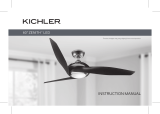 Kichler Lighting 300200PN Manuel utilisateur
Kichler Lighting 300200PN Manuel utilisateur
-
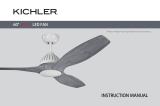 Kichler Lighting 310360SBK Manuel utilisateur
Kichler Lighting 310360SBK Manuel utilisateur
-
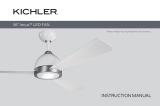 Kichler Lighting 300270SBK Manuel utilisateur
Kichler Lighting 300270SBK Manuel utilisateur
-
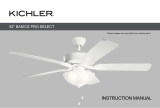 Kichler Lighting 330017SNB Manuel utilisateur
Kichler Lighting 330017SNB Manuel utilisateur
-
Kichler Lighting 330174MWH Guide d'installation
-
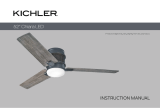 Kichler Lighting 300352NI Manuel utilisateur
Kichler Lighting 300352NI Manuel utilisateur
-
Kichler Lighting 330016SNB Manuel utilisateur
-
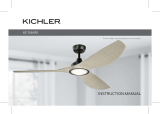 Kichler Lighting 300365MWH Manuel utilisateur
Kichler Lighting 300365MWH Manuel utilisateur
-
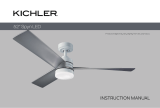 Kichler Lighting 300275NI Manuel utilisateur
Kichler Lighting 300275NI Manuel utilisateur
-
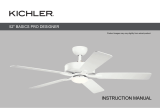 Kichler Lighting 330019SNB Manuel utilisateur
Kichler Lighting 330019SNB Manuel utilisateur















































